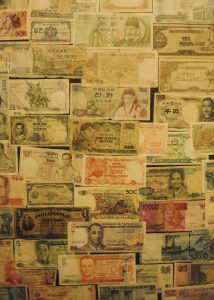Forex, short for foreign exchange, is the most liquid financial market in the world. The daily trading volume in forex is around $5.3 trillion, which makes it more than 50 times larger than the New York Stock Exchange. However, one of the most confusing aspects of forex trading for beginners is the size of the spreads. Spreads are the difference between the bid and ask price of currency pairs, and they can vary widely depending on the market conditions. In this article, we will explain why the spreads are so big in forex.
The first reason why spreads are so wide in forex is the decentralized nature of the market. Unlike the stock market, forex is not traded on a centralized exchange. Instead, it is a global network of banks, brokers, and other financial institutions that trade with each other through electronic communication networks (ECNs) or over-the-counter (OTC) markets. This means that there is no single entity that controls the price of currencies. Instead, the price is determined by the supply and demand of market participants.
The lack of a centralized exchange also means that there can be differences in the prices of currency pairs between different brokers. Each broker has its own liquidity providers, which are banks or other financial institutions that provide the broker with access to the forex market. These liquidity providers may have different quotes for the same currency pair, which can result in different prices for the same currency pair at different brokers. This is why it is important for traders to compare the spreads offered by different brokers before choosing one to trade with.
Another factor that contributes to the size of spreads in forex is market volatility. The forex market is known for its high volatility, which is the degree of price fluctuations of a currency pair over a certain period of time. When there is high volatility, the spread can widen significantly, as market makers and liquidity providers may need to adjust their quotes to reflect the changing market conditions. This is because they need to protect themselves from potential losses resulting from sudden price movements.
News events and economic data releases can also cause spreads to widen in forex. For example, when a central bank announces a change in interest rates, this can cause a significant movement in currency prices. Market makers and liquidity providers may adjust their quotes to reflect this new information, which can cause spreads to widen. Similarly, when there is a major news event such as a political crisis or a natural disaster, this can also cause spreads to widen as traders react to the news.
The size of spreads in forex also depends on the liquidity of the currency pair being traded. Liquidity refers to the ease with which a currency pair can be bought and sold without affecting its price. Major currency pairs such as EUR/USD, GBP/USD, and USD/JPY are the most liquid, which means that they have the tightest spreads. In contrast, exotic currency pairs such as USD/TRY or USD/ZAR are less liquid, which means that they have wider spreads. This is because there are fewer market participants trading these currency pairs, which can result in less trading volume and higher transaction costs.
In conclusion, the size of spreads in forex is influenced by a variety of factors, including the decentralized nature of the market, market volatility, news events and economic data releases, and the liquidity of the currency pair being traded. As a forex trader, it is important to understand these factors and choose a broker that offers competitive spreads and reliable execution. By doing so, traders can minimize their trading costs and maximize their profits in the world’s largest financial market.





